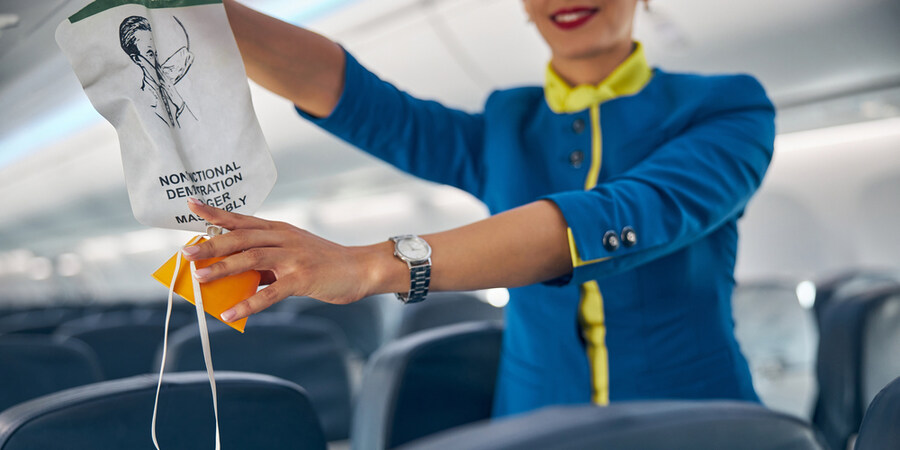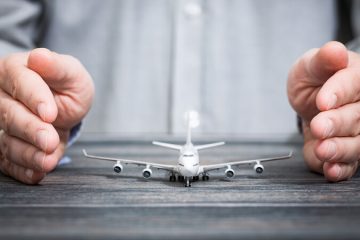In a world where travel has become an indispensable part of our lives, emergencies can occasionally arise at the most unexpected times. In-flight emergencies are hard to tackle with little help from the ground. The remoteness of thousands of feet from the earth can result in major inconveniences. There can be several types of common in-flight emergencies that can be encountered during a flight. Hence, it is a must to know and understand these emergencies and the ways to safely handle these situations.
Types of flight emergencies
1. Weather-related emergencies
At a considerable distance from the Earth, air can get unexpectedly violent. This sudden change in the air current is known as turbulence. The phenomenon can cause the airplane to shake aggressively causing jerks in the cabin. Though damage to the structure will depend on the turbulence and strength of the airplane, cabin security can only be maintained by seat belts. Hence, one should pay attention to the cabin announcements and fasten their belts immediately after the announcement.
2. Engine Failure
Among the top stressful situations, engine failure can easily rank first. Engine failure is not common as aircraft manufacturers and maintenance crew ensure that no malfunction occurs during take-off, flight, and landing of the airplane. The primary reason is that they simply can’t afford for anything to go wrong. However, in case something like this happens, one must remain calm and listen carefully to every instruction of the pilot or cabin crew. The aircraft is made safe for such emergencies and is equipped with facilities to maintain control and necessitate a safe landing.
3. Medical emergency on plane
With changing pressures and normal stress situations, airplane medical emergencies are fairly common. The seriousness can range from non-serious such as airplane ears to as serious as cardiac arrest. These problems need proper prevention and treatment before they become irritable or in the worst cases fatal. Hence, you must report any issue without hesitation to the cabin crew. The pilot and cabin crew will respond accordingly with the decision to land the airplane or wait for the next destination to come.
4. Cabin Pressure Loss

Another matter of great importance and care is cabin pressure loss. It can happen due to numerous reasons such as faulty fuselage or pressure system failure. In normal cases, the oxygen mask comes down and can be used to avoid oxygen deprivation. However, if the situation is harsh it will result in physiological harm due to heavy pressure on the body. In such cases, the pilot will descend the aircraft to a safe height as soon as possible while maintaining safety.
Suggested Read:8 Tips To Get Best Deals On Corporate Flight Bookings
5. Fire or smoke
One of the most frightening experiences is seeing fire and smoke rising from somewhere in the aircraft. It can mean that some electronics, electricals, or sections of the airplane are facing serious malfunction and immediate action is required. However, modern aircraft are equipped with smoke detectors to alarm the cabin crew. Consequently, the system will trigger fire prevention agents to discharge in the cabin and all inside the flight. As an added precaution, the crew will declare an emergency and look for the nearest airport for an emergency landing. The plane will be evacuated as soon as possible and a technical crew will examine the airplane and make repairs before taking off again.
6. Emergency landing
In case a situation is so created that it jeopardizes the safety of the passengers, crew, or airplane, the pilot may decide to land before reaching the final destination. This kind of landing out of necessity is known as an emergency landing. In such an emergency, the crew will communicate with the air traffic control and go through a set procedure and checklist before making the final call. The crew will inform the passengers about the situation and its seriousness without causing chaos. Passengers are required to cooperate with the crew for a faster and safer landing. Once the plane has touched down, it may be a possibility that you may see yourself escorted by fire or medics officials for additional precaution.
7. Hijacking and security
Hijacking refers to the unauthorized seizure of an airplane by individuals with malicious intent. Most of the hijacking cases are concerned with national integrity; hence, are resolved with utmost care. Though hijacking is a rare occurrence, it is one of the sensitive matters in airline and passenger safety. In such events, Hijackers have a solidified intent or want to bargain with the government. Therefore as a passenger and cabin crew member, it is necessary to remain calm and not make sudden movements till the matter is resolved by the state.
Inflight emergencies are critical events that require swift actions to avoid major inconveniences and safety issues. Knowing the right procedures as a passenger would help you safeguard your and others’ lives on airplanes. Therefore, you prevent yourself from the effects of such emergencies and coordinate with the staff while the experts are at work.
Suggested Read: How To Get Affordable Business Class Flights For Employees
Flight Emergencies FAQs
What should you do in the event of an inflight emergency?
One should not panic in such situations and focus on the commands of the airline crew. They are qualified and trained for such emergencies.
How can passengers assist during inflight emergencies?
The passengers
Are there medical professionals on board to assist during medical emergencies?
Medical professionals are not always on board, however, the flight attendants are well-trained to handle medical emergencies.
What measures are in place to ensure passenger safety?
Aircraft are regularly inspected for any defects, the crew is well-trained, emergency equipment like oxygen masks and parachutes are available in the flight, and Evacuation plans and communications protocols are well-set in advance.
What should I do if there is turbulence during a flight?
The passenger should remain seated and properly fasten their seat belts. They must remain calm and listen to the instructions of the flight crew.



